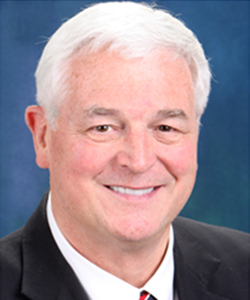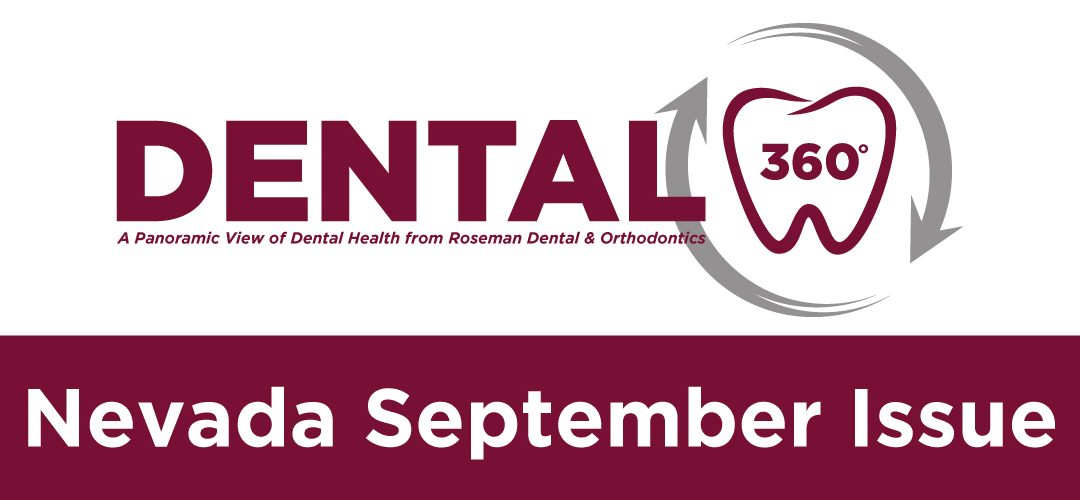
by Roseman Dental | Sep 14, 2021 | Dental 360, Dental Clinic Blog, Roseman Dental - NV
Fall has arrived, school is back in session and our Dental 360° e-newsletter has returned from summer break. During this September issue of Dental 360°, you’ll learn about Dr. Roberson and his well-deserved awards. With sports in full swing, you’ll learn the importance of wearing a mouthguard. In addition, you’ll be educated on the benefits of dental sealants and tips for caring for your children’s teeth.
Roseman Dental & Orthodontics’ Dental 360° is a monthly e-newsletter. Each month you’ll receive a panoramic view of dental health. Dental health is key to your overall health and here at Roseman Dental & Orthodontics, we are dedicated to improving not only your mouth, but your whole self. At our clinic we have an excellent team of licensed dentists, orthodontists, orthodontic residents – 30 to be exact, and dental residents all focused on you and your family’s oral health. Roseman Dental & Orthodontics has been serving its community since 2009 and is a comprehensive, one-stop shop for all your dental needs including dental, orthodontic and craniofacial cleft lip & palate treatment.
We hope you find Dental 360° helpful and informative. We look forward to connecting with you each month.
Dental 360° September Articles
Congratulations Dr. Glen Roberson!
The Importance of Wearing Mouthguards
The Benefits of Dental Sealants
Caring for Your Children’s Teeth
Subscribe to e-newsletter

Click Here to Leave a Review
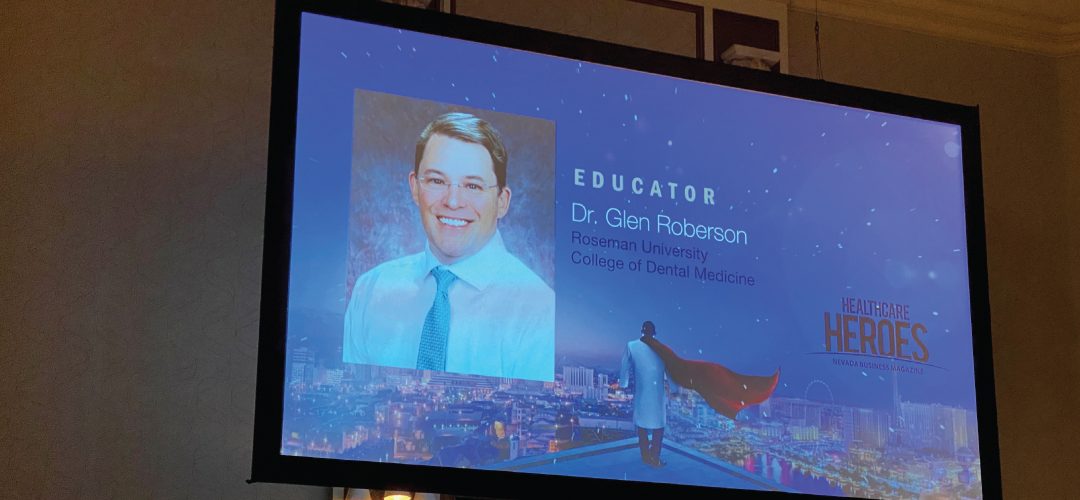
by Roseman Dental | Sep 13, 2021 | Dental 360, Dental Clinic Blog, Roseman Dental - NV
Congratulations to our very own Dr. Glen Roberson, Program Director for our Advanced Education in Orthodontics and Dentofacial Orthopedics/MBA (AEODO/MBA) Residency Program. In August, Dr. Roberson won Greenspun Media Group’s Health Care Quarterly Top Doctors Reader’s Choice award under the category of Volunteer for his work in our community with infants, children and adults diagnosed with cleft lip and palate anomalies. There are seven categories under the Reader’s Choice section and only one winner for each of the categories. The Reader’s Choice winners are nominated by the public and reviewed by a panel of healthcare industry experts.
Each year Greenspun Media Group’s Health Care Quarterly honors and celebrates the Top Doctors who have gone above and beyond to promote a healthy Nevada. Dr. Roberson is well deserving of this award and Roseman Dental & Orthodontics is honored to have him teaching the next generation of orthodontists. In addition to his Reader’s Choice award, Dr. Roberson is also a Nevada Business Magazine “Healthcare Hero” honoree as an “Educator Hero” and was recognized at a special event on September 9th.
Make sure to congratulate Dr. Roberson at your next appointment.

by Roseman Dental | Sep 13, 2021 | Dental 360, Dental Clinic Blog, Oral Health, Roseman Dental - NV, Roseman Dental - UT
A Guide for Proper Dental Treatment at Every Age
When your child was first born you probably started following a rigorous schedule of appointments with your pediatrician to keep him or her healthy. Many parents are not aware that children also need proper dental care and oral check-ups starting at an early age.
Tooth decay in toddlers, preschoolers, and school-age children is one of the leading preventable diseases in the U.S. It can lead to several health and lifestyle complications, including pain and soreness, improper speech development, inability to chew properly, missed school days, premature loss of baby teeth, infections, inflammation and gum disease. Here is a quick guide to help you understand your child’s oral care needs from birth through teenage years.
Baby Teeth
Just because kids lose baby teeth doesn’t mean they don’t need them—baby teeth are important placeholders for adult teeth and are at risk for tooth decay without proper care.
Birth to 12 months:
- Make oral health check-ups part of your baby’s well-child visits with your doctor.
- When the first teeth erupt from the gums, wipe them gently with a wet washcloth or lightly brush them with water and an extra soft bristle toothbrush. Do not use toothpaste.
12 to 24 months:
- Brush your child’s teeth at least twice a day using a baby toothbrush and water. Talk to the dentist about whether you should use toothpaste.
- Avoid sugary drinks like juice or milk between meals and fill bottles with water when putting children to sleep.
- Wean children of sucking habits on things like pacifiers or thumbs.
- Take your child for their first visit with a dentist before age 2.
- Talk to your dentist about how to help your child get enough fluoride, especially in Utah where it’s not added to the water supply.
Children’s Teeth
Baby teeth play a role in helping toddlers and preschoolers with chewing, swallowing, speech development, and creating space for adult teeth.
Ages 2-5:
- Help children brush their teeth for 2 minutes, 2 times a day. Use a soft-bristle toothbrush and a pea-size amount of fluoride toothpaste, making sure the child doesn’t swallow it.
- Begin flossing as soon as two teeth touch each other.
- Dentists recommend that you continue to help your child brush until the age of 4, or around the time they have the motor skills to neatly write their name.
- Go in for dental check-ups once or twice a year.
- Fill sippy cups with water and limit sugary drink intake (juice, milk, sports drinks, soda, lemonade, and tea).
- Feed your child healthy meals and snacks that are low in sugar.
Ages 6-10:
- Around age 6 children will start losing baby teeth as permanent teeth erupt.
- Schedule dentist appointments every six months for check-ups and cleanings.
- Feed children healthy food and snacks to help develop strong teeth and healthy gums.
- Talk to your dentist about getting sealants on permanent molars to protect against cavities.
- As children begin participating in sports and outdoor recreation, make sure teeth are protected with a mouthguard.
- The American Academy of Orthodontists recommends children get screened around age 7 to identify developmental, jaw, or bite problems. Correcting issues early may prevent more extensive (and expensive) orthodontic treatment later.
Pre-Teen and Teenager’s Teeth
As children grow, they should take on more responsibility for good oral health.
- Teens should be brushing morning and night with a soft bristle toothbrush and fluoride toothpaste.
- Encourage flossing at least once a day to remove plaque between teeth.
- Continue to visit the dentist for check-ups twice a year.
- Help your teenagers eat a healthy diet that is high in lean protein, fruits, vegetables, and whole grains, and low in sugar and processed foods.
- Teach your children about the dangers of cigarette, secondhand smoke and vaping, which can contribute to tooth decay, gum disease and other health issues.
- Visit an orthodontist (if you have not done so to find out if your child will need braces. Roseman Dental & Orthodontics – NV Location offers reduced cost orthodontic treatment.
Proper oral health care at an early age can help prevent problems later in life. Oral health is intricately connected to our overall health and should be just as much a priority as doctor visits. If you don’t have a dentist, contact our clinic to find affordable and high-quality dental care for your whole family.
Nevada Location
Utah Location

by Roseman Dental | Sep 13, 2021 | Dental 360, Dental Clinic Blog, Oral Health, Roseman Dental - NV, Roseman Dental - UT
Those who choose to enter dental school want to provide a valuable service for their patients. Without proper oral care, significant health problems can occur. Part of dental work includes providing preventative care for those whose teeth may be at risk for serious infections, cavities, or deterioration. The treatment that a dentist chooses to use can have big impact on the physical and emotional well-being of the patient. Utilizing pit and fissure sealants as part of preventative treatment for susceptible patients can improve quality of life and ensure that oral health issues do not escalate.
Protecting Against Decay
Molars naturally have grooves and wrinkles that are hard to brush thoroughly. These pit and fissure systems can degrade when children are very young and are unable to perform proper oral hygiene without the help of an adult. When plaque builds up and stagnates in the pits and fissures, it can cause lesions and demineralize the enamel of the teeth. Children who have affected teeth need sealants to help protect the teeth against decay. That decay, called dental caries (or cavities), can result in several dental problems.
A Good Investment
By using sealants early before decay becomes a bigger problem, patients are able to avoid the costs of repairing severely damaged teeth. Fillings and other restoration options are often more costly than dental sealants, which can be applied in just a few minutes and require no drilling or other invasive processes. If there are many teeth that need to be sealed, a patient is better off doing them all at once rather than waiting for dental caries to set in and eat away at otherwise healthy teeth.
Starting Early
After losing baby teeth between the ages of 5 and 10, children will have the next set of teeth for a lifetime. Starting dental treatments early can help ensure that those teeth are healthy and free from decay from a young age. The American Dental Association recommends using sealants as soon as a problem is noticed in young children, especially if there is any indication of dental caries on a child’s permanent adult teeth.
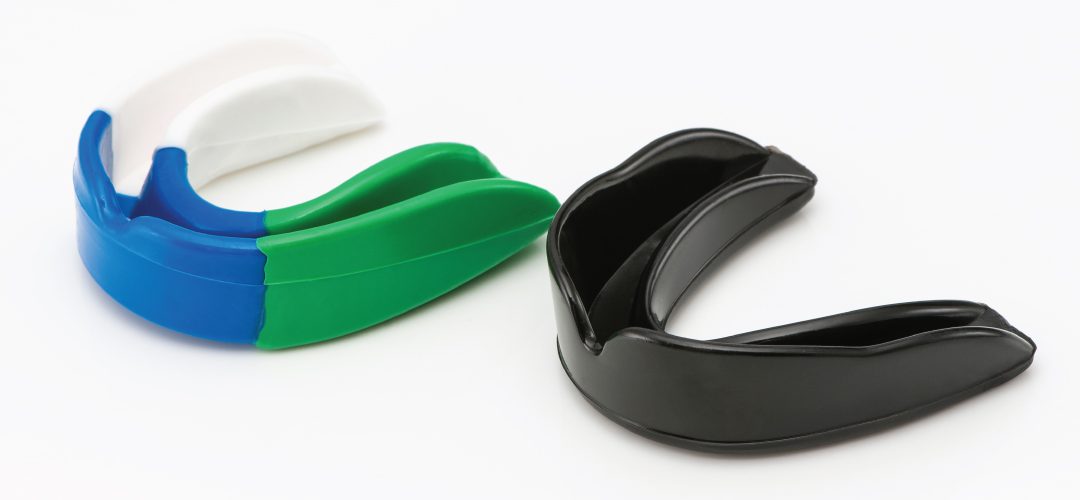
by Roseman Dental | Sep 13, 2021 | Dental 360, Dental Clinic Blog, Oral Health, Roseman Dental - NV, Roseman Dental - UT
School has started and after-school activities including sports have picked back up again which means that there is an increased risk for losing teeth due to mouth injuries. When a child loses his two front teeth, it’s cute and we write songs about it. When an adult loses any of his or her teeth, it can be painful and embarrassing and have a major impact on quality of life.
Missing Teeth
Missing teeth can affect you in many ways. It can change eating from something enjoyable to a task, especially for crunchy foods like fruits and vegetables. Speaking may become more difficult, since many consonant sounds are made by your tongue touching your teeth—a simple action that becomes impossible if your teeth aren’t there. If the lost teeth are prominent, smiling and conversing with friends and loved ones can become awkward or uncomfortable. And replacing missing teeth with false ones can be costly, painful, and can take a lot of time. If implants are needed to replace teeth, we offer affordable options. To learn more about implants click here.
Protecting Your Mouth
Wearing a mouthguard can prevent injuries to your teeth, mouth, and jaw, such as having teeth chipped or knocked out. You may think that only football players or boxers need to use mouthguards, but the American Dental Association and the International Academy for Sports Dentistry recommend that you wear a mouthguard during any activity with the potential for head-to-head contact, violent falls, or any other blows to the mouth, whether on purpose or accidental. This includes:
- Acrobatics
- Basketball
- Bicycling
- Boxing
- Equestrianism
- Extreme sports
- Field hockey
- Football
- Gymnastics
- Handball
- Ice hockey
- Inline skating
- Lacrosse
- Martial arts
- Racquetball
- Rugby
- Shot-putting
- Skateboarding
- Skiing
- Skydiving
- Soccer
- Softball
- Squash
- Surfing
- Volleyball
- Water polo
- Weightlifting
- Wrestling
Minimizing Damage
While wearing a mouthguard will not prevent facial trauma such as soft tissue damage or broken facial bones, it will protect your teeth and thus, your smile. The more custom-fitted your mouthguard is, the more protection it will offer. The three main types of mouthguards are: stock mouthguards, boil-and-bite mouthguards that form to your mouth, and custom-fit mouthguards made by a dentist. Stock mouthguards are the least expensive but provide the least amount of protection. For most casual athletes, a boil-and-bite mouthguard is the best choice. Those who participate in very intense or high-contact sports should consider getting a mouthguard made to fit their individual mouths. Talk to your dentist about molded designs that will better protect teeth, preventing painful and debilitating injuries.
Being active is important. Being safe while being active is just as important. Use a mouthguard to protect your teeth while you play, especially if you play hard.

by Roseman Dental | Jul 12, 2021 | Dental 360, Dental Clinic Blog, Roseman Dental - NV
Since 2008, Roseman Dental & Orthodontics has been collaborating with Nevada Early Intervention Services and the Southern Nevada Cleft Palate & Craniofacial Team that helps children born with cleft lip and palate. This team is the only cleft lip/palate craniofacial team in Southern Nevada.
Roseman Dental & Orthodontics’ orthodontic residents and faculty volunteer at the monthly clinic held at the Nevada Early Intervention Services office. The Clinic provides children up to the age of 18 and their families with a comprehensive approach and management of care which includes diagnosis, recommended treatment, psychosocial support and more all at no cost. Those served include children with cleft lip and/or cleft palate and other cranio conditions, craniofacial abnormalities, and congenital anomalies.
Additionally, Roseman Dental & Orthodontics has initiated a new approach to cleft treatment – the Nasoalveolar molding or NAM – in conjunction with a plastic surgeon that minimizes the effects of surgery and maximizes the innate growth potential of the children, leading to fewer surgeries over their lifetime.
Roseman Dental & Orthodontics has been performing NAMs at its Nevada location since 2012. Roseman Dental & Orthodontics’ NAM team consists of all the medical specialists necessary for a child’s care and development including pediatric dentists, plastic surgeons, pediatricians, ENT, audiologists, nutritionists, and speech pathologists.
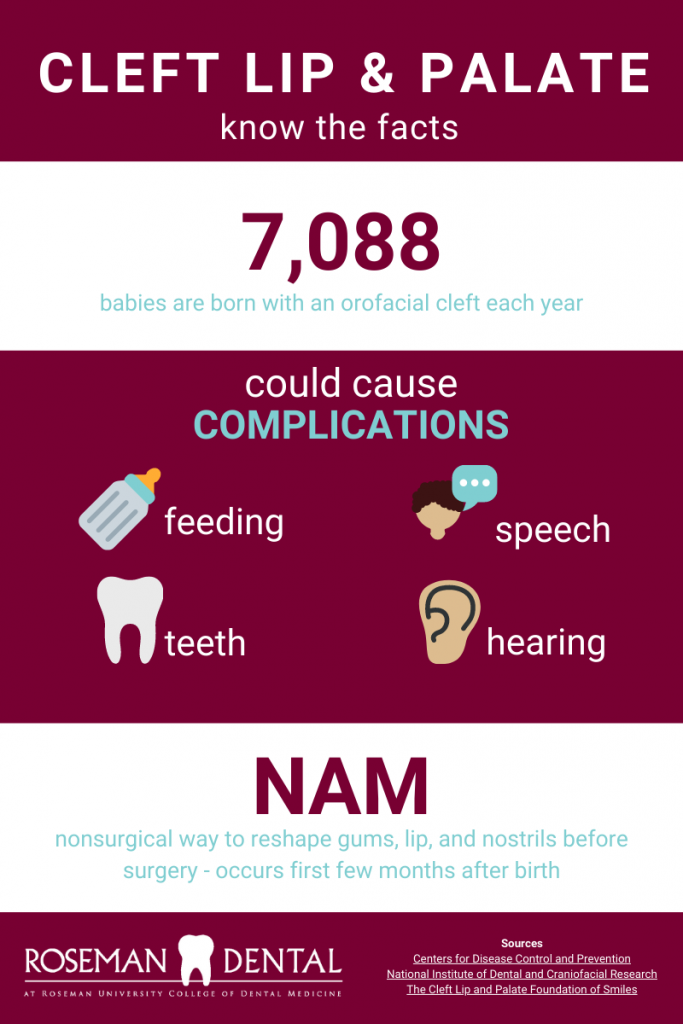
What is Nasoalveolar Molding (NAM)?
NAM is a nonsurgical way to reshape the gums, lip, and nostrils with a plastic plate before cleft lip and palate surgery. Pre-surgery molding may decrease the number of surgeries a child needs because it makes the cleft less severe. A NAM is used mainly for children with large or wide clefts and has greatly changed cleft repair.
- It reduces the cleft inside the mouth.
- It reduces the gap in the upper lip.
- It lifts and narrows the nose.
Surgery takes place after the molding is complete when the child is around age four to six months.
Previously, a child with a large cleft needed many surgeries between birth and age 18, putting the child at risk for psychological and social challenges. The first surgery pulled the lip together, the second improved the position of the lip, two more would shape the nose, then another — often including a bone graft — would close the palate, and so on.
With a NAM, orthodontists at Roseman Dental can reduce a large cleft in the months before surgery. A NAM also improves the shape and position of the lip and nose. With a smaller cleft, there is less tension when the surgeon closes the cleft. Molding the lip and nose in advance can mean less reshaping is needed during surgery. With a better result from the first surgery, a child may need fewer surgeries later in childhood.
How does a NAM work?
NAM works by gently directing the growth of a baby’s gums and the shape of their nose during the first few months after birth, when these tissues are soft and easy to mold.
Parents work with orthodontists at Roseman Dental during NAM therapy. Just days after the baby is born, the orthodontist fits the baby with a custom molding plate that looks like a retainer issued after braces. The baby wears the molding plate 24 hours a day, seven days a week, including when they are feeding. The plate is held in place using denture adhesive. Medical tape is then placed from cheek to cheek over the cleft to help mold the bones inside the mouth as well as the lips. Parents, taught by the orthodontists, change the tape and clean the molding plate at home as needed (usually three to four times each day).
Every one to two weeks, the orthodontist makes small changes to the shape of the molding plate to guide the baby’s gums as they grow. Each visit takes about 40 to 60 minutes.
As the tape is closing the bones, a metal prong with a soft material covering inserts into the nose to form the molding plate. This post (called a nasal stent) slides easily into the baby’s nostril. It slowly lifts up the nose and shapes the nostril on the side of the cleft. This stent is removed approximately one week before the lip and nose repair surgery.
How does a NAM feel for the baby?
The molding plate and nasal stent are not painful. After getting used to the plate for a few days, many babies seem happier wearing it than they did without it. This may happen because the plate acts as a palate (roof of the mouth). It keeps your baby’s tongue from pushing into the cleft, making feeding easier for the baby. Without a NAM, infants have a very difficult time feeding.
See recent Las Vegas Review-Journal article about one of Roseman Dental & Orthodontics’ patients by clicking HERE.
If you are expecting a baby with cleft palate or lip, or know someone that needs help, please contact our Nevada location, Roseman Dental & Orthodontics, at 702-968-5222.
